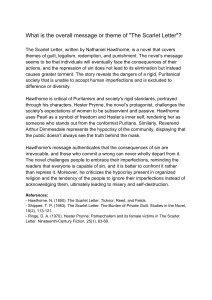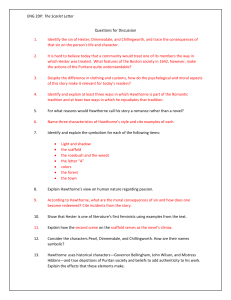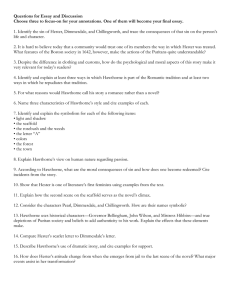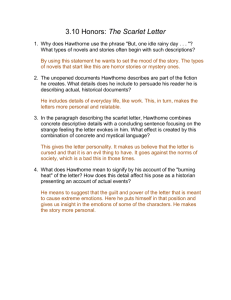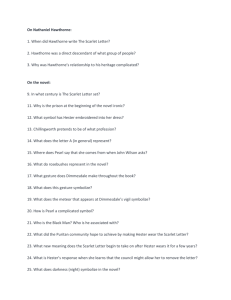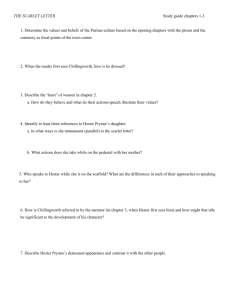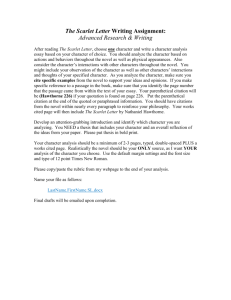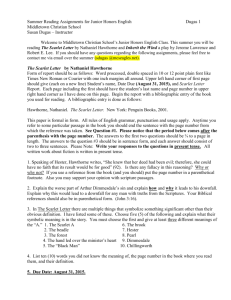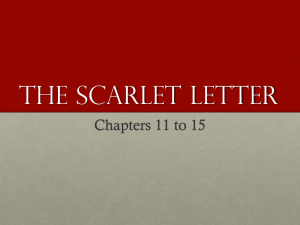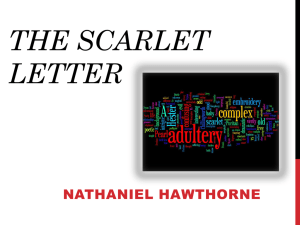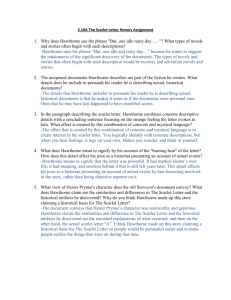Hawthorne Discussion Prep
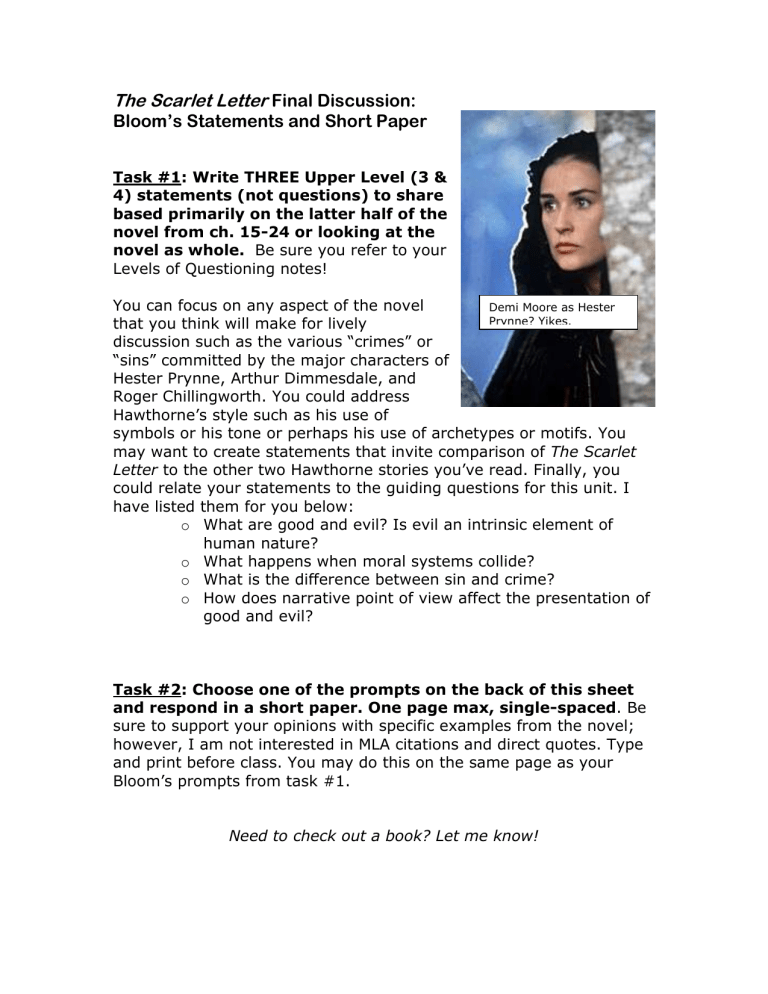
The Scarlet Letter
Final Discussion:
Bloom’s Statements and Short Paper
Task #1: Write THREE Upper Level (3 &
4) statements (not questions) to share based primarily on the latter half of the novel from ch. 15-24 or looking at the
novel as whole. Be sure you refer to your
Levels of Questioning notes!
You can focus on any aspect of the novel that you think will make for lively discussion such as the various “crimes” or
“sins” committed by the major characters of
Hester Prynne, Arthur Dimmesdale, and
Roger Chillingworth. You could address
Hawthorne’s style such as his use of
Demi Moore as Hester
Prynne? Yikes. symbols or his tone or perhaps his use of archetypes or motifs. You may want to create statements that invite comparison of The Scarlet
Letter to the other two Hawthorne stories you’ve read. Finally, you could relate your statements to the guiding questions for this unit. I have listed them for you below: o What are good and evil? Is evil an intrinsic element of human nature? o What happens when moral systems collide? o What is the difference between sin and crime? o How does narrative point of view affect the presentation of good and evil?
Task #2: Choose one of the prompts on the back of this sheet
and respond in a short paper. One page max, single-spaced. Be sure to support your opinions with specific examples from the novel; however, I am not interested in MLA citations and direct quotes. Type and print before class. You may do this on the same page as your
Bloom’s prompts from task #1.
Need to check out a book? Let me know!
PROMPT 1: Responding to Criticism. Henry James, the famous
American novelist, thought Hawthorne overused symbolism in The
Scarlet Letter. In the following passage, he cites one example:
In The Scarlet Letter there is a great deal of symbolism; there is,
I think, too much. It is overdone at times, and becomes mechanical; it ceases to be impressive, and grazes triviality. The idea of the mystic A which the young minister finds imprinted upon his breast and eating into his flesh, in sympathy with the embroidered badge that Hester is condemned to wear, appears to me to be a case in point. This suggestion should, I think, have been just made and dropped; to insist upon it, and return to it, is to exaggerate the weak side of the subject. Hawthorne returns to it consistently, plays with it and seems charmed by it; until at last the reader feels tempted to declare that his employment of it is puerile.
—from “Hawthorne”, Henry James
Respond to James’s criticism, agreeing or disagreeing with it. IF you agree, cite other examples from the novel in which Hawthorne pushes his symbolism too far. If you disagree, give your reasons for thinking
Hawthorne’s use of symbols is justified and effective.
PROMPT 2: Identify the Protagonist. The critic Randall Stewart has this to say about Hester and Dimmesdale:
. . . But [Hester] is not the protagonist, the chief actor, and the tragedy of The Scarlet Letter is not her tragedy but Arthur’s. He is the persecuted one, the tempted one. He it was whom the sorrows of death encompassed . . . His public confession is one of the noblest climaxes of tragic literature.
Respond to Stewart’s assertion, agreeing or disagreeing with it. Cite evidence from the novel to support your opinion.
PROPMT 3: Assessing a Villain. Many readers consider Chillingworth essential to the plot, but not a believable character. They find him to be too much the villain of melodrama—the kind of drama that oversimplifies characterization and exaggerates emotional content.
Comment on this point of view, indicating whether you agree, partly agree, or disagree. Cite evidence from the novel to support your opinion.
